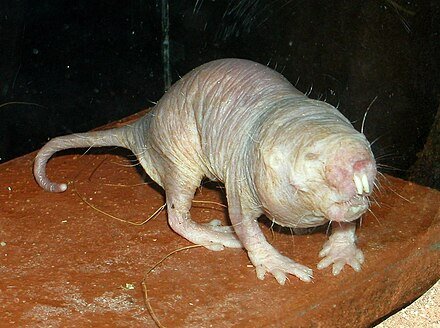
Understanding the naked mole rat’s role in culture is fascinating. This little animal challenges our perceptions of beauty and social norms. It’s hard not to be drawn in by both its unusual characteristics and its fascinating social behavior. If you’re curious about how this humble creature has made its mark on human creativity, stick around. We’ll explore its cultural significance, its links to wisdom and resilience, and how it serves as a symbol across different contexts.
Naked Mole Rats in Folklore and Myth
Folklore often uses animals to convey deeper messages or morals. The naked mole rat is no exception. In some cultures, its peculiar appearance and way of life have been woven into stories that teach valuable lessons about community and cooperation. For example, in certain African tales, these creatures symbolize unity and teamwork because they thrive in complex underground societies.
In many narratives, the naked mole rat might be portrayed as the wise old creature, emphasizing the idea that looks can be deceiving. Despite its lack of fur and small stature, this critter showcases one of nature’s remarkable adaptations: living in harmony with its colony. Think of it as a reminder that what’s inside—like character and intelligence—matters more than outward appearances.
Representation in Literature
Literature often features animals as characters or symbols. The naked mole rat pops up in various children’s books, where it’s depicted as comical or endearing. Authors might use this unique rodent to convey messages about embracing differences or finding strength in community.
One example that stands out is “The Naked Mole-Rat Letters” by Mary Amato, where a character uses the mole rat to tackle issues of friendship and acceptance. This kind of storytelling opens the door for discussions about social structures, as it mirrors the naked mole rat’s own fascinating, matriarchal society. Through these stories, children learn important lessons about empathy, diversity, and the value of togetherness.
Art and Media Representations
In art, the naked mole rat has become an intriguing subject for various forms of expression. Its unique appearance lends itself well to whimsical illustrations or satirical pieces. Artists often highlight the rat’s quirks, showing it in exaggerated, playful ways that inspire laughter and intrigue.
On television, the naked mole rat has even found fame! Take Disney’s *Kim Possible*, for example, where Rufus, the naked mole rat, serves as a sidekick. He’s portrayed as lovable and resourceful, bringing humor and heart to the storyline. This representation not only entertains but also introduces viewers to the idea of celebrating those who might seem different.
Symbols of Resilience
Another fascinating aspect of the naked mole rat’s cultural representation is how it embodies resilience and survival. These creatures thrive in harsh underground environments, showcasing an incredible ability to adapt to their surroundings. In many cultures, they symbolize perseverance and the strength found in unity.
For instance, in modern contexts, the naked mole rat’s ability to withstand low oxygen levels and their resistance to cancer have led to discussions about health and longevity. People often draw parallels between this small mammal and human resilience in overcoming challenges, whether personal or collective.
Conservation and Cultural Awareness
As we delve deeper into understanding the naked mole rat’s presence in culture, it’s essential to recognize the conversation around conservation. These unique creatures remind us of the importance of biodiversity and the delicate balance of ecosystems. In certain cultures, they represent the need to protect wildlife and their habitats, encouraging stewardship of our planet.
Efforts to raise awareness about the naked mole rat can lead to broader discussions about environmental conservation. As we learn to appreciate this little animal in cultural contexts, we’re also reminded of our role in preserving the diverse forms of life that share our world.
Contemporary Significance
Today, the naked mole rat’s image continues to thrive in popular culture. From memes and social media posts to being featured in documentaries, it captures our curiosity and humor. This ongoing fascination speaks to our collective love for the unusual and our tendency to find comedy in the quirks of nature.
Moreover, the naked mole rat is often used in scientific research, particularly in studies related to social behavior and longevity. Its presence in both academic literature and popular culture illustrates the blend of science and storytelling, making it a symbol of curiosity that encourages us to explore the world around us.
In conclusion, the naked mole rat is more than just a quirky creature; it plays a significant role in culture and folklore. From teaching us about cooperation and resilience in stories to captivating us in art and media, this little rodent helps us reflect on deeper themes in human experience. So, next time you come across a naked mole rat, whether in a book, on TV, or even in real life, take a moment to appreciate the layers of meaning it carries. It’s a reminder that even the most unconventional characters have stories worth telling.
